Sylvie RPG (2024): Reacting to Playtests
Sylvie had various reactions when playtesters didn't find her hidden caves
Follow the developer elsewhere: (Twitter, Cohost, Blog)
Sylvie RPG: 7 Elf Apocalypse is a top-down action RPG with a tiny 49x49 pixel resolution, simple bump combat, and many secrets. To fight monsters, you just bump into them to deal damage, while avoiding their telegraphed attacks. Nearly every screen in the game's overworld contains a hidden cave that can be revealed by some method. Sometimes it's as simple as defeating all the monsters on the screen, but often it requires more obscure actions.
Playtest Power
Sylvie RPG had four playtesters, who each recorded or streamed at least one play session for me of the "first finished draft" of the game.
You might see other game designers, especially ones working on larger commercial games, talk about the importance of bringing on playtesters throughout development. They can help determine the direction of the game and make sure you aren't wasting time and money on ideas that people won't like.
As a hobbyist making freeware games, I don't usually ask for external playtesters on my games until the game is basically done. I like to shape the core of the game myself, and use playtests just to see how other people approach it. Still, even this late-stage playtesting can end up significantly changing how a game plays.
What I find hardest to deal with when watching playtests is when a player either struggles more than expected, or fails to engage.
Hidden Hangups
That's what happened with the initial design of the hidden caves in Sylvie RPG. There weren't really any hints for how to find them, so players were just expected to experiment with different ideas. However, the playtesters didn't really do this experimentation most of the time. When they did, it was usually because they revealed a hidden cave by accident, and were trying to replicate it. But they usually couldn't find a way to replicate it without any hints, and gave up quickly.
One of the hidden caves that playtesters had trouble finding was the extremely important cave near the start of the game that allows you to level up. The reveal method was pretty simple, I thought – stand on top of a conspicuous-looking portrait in the center of the town. But I hadn't managed to instill the mindset of looking for these secrets, so most playtesters spent 30-45 minutes dying over and over at Level 1 with 1 HP before stumbling upon this cave.
I ended up adding an even more conspicuous bell that you ring to open the entrance. I decided there wasn't really any good reason for that particular cave to be hard to find.
For many other caves, the issue was more difficult. There are some screens where you can "fail" the reveal condition, for example, by killing a certain enemy that needs to be left alive. There are others where you cannot fail, but the condition is obscure, like standing still and waiting on a specific tile. I think the fact that players had no indication of whether it was even possible to reveal a cave without resetting the screen made them stop engaging with the system.
Please try to understand me. That's the soulful cry underlying all my works. But I failed to make the players interested in understanding me. They just walked away from my secret world.
Careful Changes
I want you to struggle, but not if it ends with losing interest in me.
At the time, I decided what to add, cut, and change based on my gut feelings, but if I had to codify it into a principle, it would be those words above.
I added something I called the "star system", where if I thought a hidden cave was hard to find, or if it was possible to fail the reveal condition, the cave would be marked by a four-pointed star, and the star would disappear if the reveal condition became impossible.
This change felt right to me, because there's still a sense of struggle and understanding. The presence of the star encourages you to experiment. Noticing that the star sometimes disappears and figuring out what causes it to disappear becomes a puzzle element that leads you closer to the answer.
On the other hand, I also briefly considered adding stronger visual hints to certain secrets. For example, I tried adding a very prominent flower to a tile that you're supposed to stand on, because I was worried that even with the star system, the old more-subtle visual difference wasn't enough. But this hint and some other similar ones didn't feel right to me. The vibe was less "Please try to understand me" and more "Hey asshole, there's a secret over here!" I was worried about removing too much of the struggle from the secret-hunting.
Shared Secrets
In the end, finding secrets in Sylvie RPG became much easier, and some players even found every hidden cave on their own without help. Most people didn't find them all, but post-release players seemed a lot more motivated to search for them than the playtesters.
And best of all, it turned out it was a common experience to talk to other players after finishing the game and learn about secrets you missed. One of my original hopes was that the secret system would get players to share their discoveries with each other and work out the mysteries of the game together.
I make games to share the things I care about with others. For me, the benefit of playtests isn't to find out whether those things are boring and stupid, but to see if I'm making a good case for my passions.
Seeing players struggle with your game, or fail to engage with certain elements, isn't always a "problem" that you have to solve. There's a difficult line you have to draw between encouraging players to care and making too many compromises. I still feel a little unsure about it, but I think I'm happy with how I drew this line in Sylvie RPG.
Consider taking the Volume 1 reader survey!




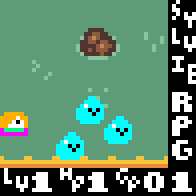
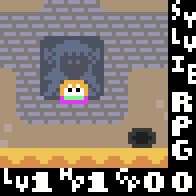
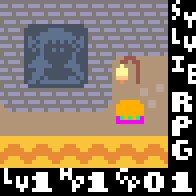
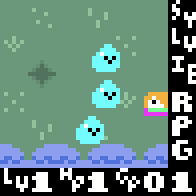
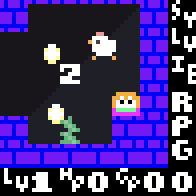
i love sylvie rpg and its secret's